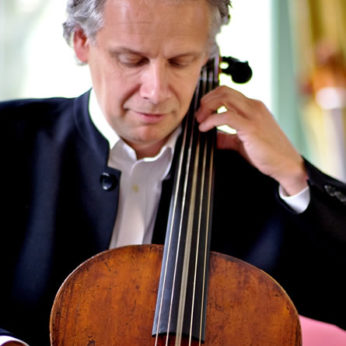Composer: Gabriel Fauré (b. 1845 - d. 1924)
Performance date: 06/07/2016
Venue: Bantry Library
Composition Year: 1922-3
Duration: 00:20:40
Recording Engineer: Richard McCullough, RTÉ lyric fm
Instrumentation: vn, va, vc, db, pf
Instrumentation Category:Trio
Artists:
Pieter Wiespelwey -
[cello]
Elina Vähäla -
[violin]
Cédric Tiberghien -
[piano]

Between the end of World War 1 and his death in 1924,
which is to say between the ages of 73 and 79, Gabriel Fauré composed six major
chamber works – the Second Violin Sonata, both Cello Sonatas, the Second Piano
Quintet, his only String Quartet and this Piano Trio. The latter is almost the last of this outburst of
masterpieces. He wrote the Andantino in
the summer of 1922, inspired by the sight of the Pyrenees, completing the other
movements in
by the spring of 1923. All this activity is even more astonishing as he was
half-blind and almost completely deaf.
Despite his health, no shadows cloud this memorable
opening movement, whose mesmerising beauty disguises its classic sonata form
structure. The economy and coherence of the two main themes convey an
impression of total unity, while Fauré’s harmonic genius generates the idea of
unlimited freedom, culminating in the climactic coda.
The Andantino is one of the most beguiling
slow movements in all music, an inspired weaving and interweaving of its two
main ideas. The first theme, announced by the violin and answered by the cello,
opens this dialogue, to which the piano soon adds another theme, one that gives
rise to much Fauréan chromaticism. A slow ascending theme, led by the keyboard,
develops into a passionate central section. The movement ends serenely but we
know that theme will haunt us for nights to come.
After
this the turbulence of the Allegro vivo
finale comes as a surprise. The opening six-bar theme in string octaves is
immediately answered by a strongly contrasting theme, again of six bars, from
the piano, which is like an irregularly accented rustic dance. Indeed we
quickly realise that the movement is taking the form of a joyful dance,
sometimes losing its way in harmonic confusion or wildly unpredictable rhythms,
but never endangering its radiant D major apotheosis. Fauré also introduces a
third theme, again sharply accented, which is treated canonically by the
strings. This and the keyboard answer to it feature prominently in the
development and recapitulation, where the three themes reappear in reverse
order. The vigour and strength of this music make a wonderfully positive
response to the debilitating effects of illness and old age. As one perceptive
critic asked: Where ever will all this
lead us when he is a hundred years old?
Copyright © 2024 West Cork Music. All rights reserved.
Designed and developed by Matrix Internet